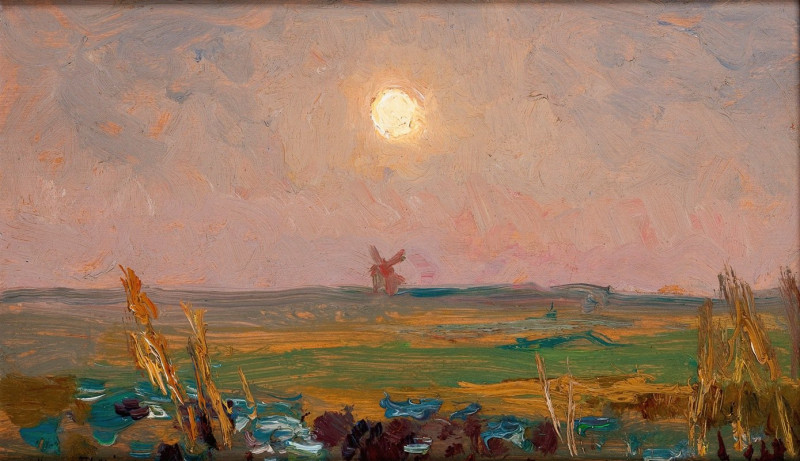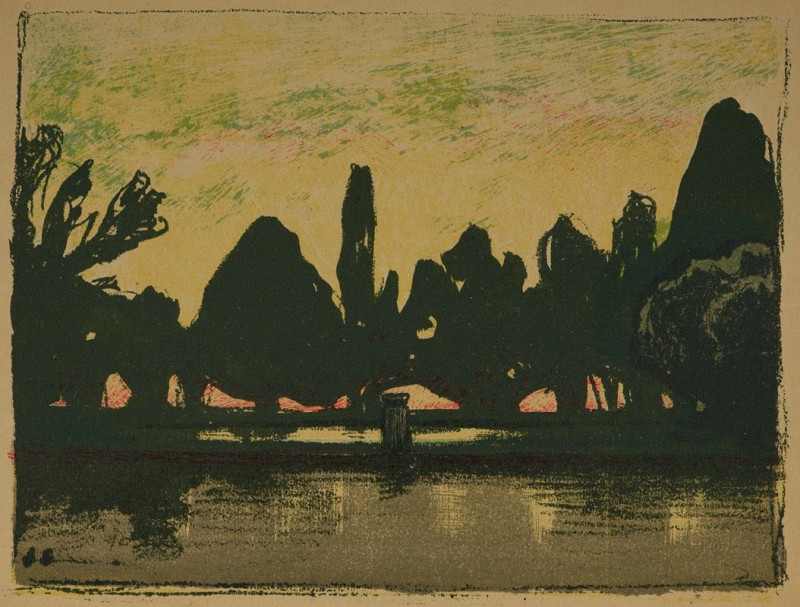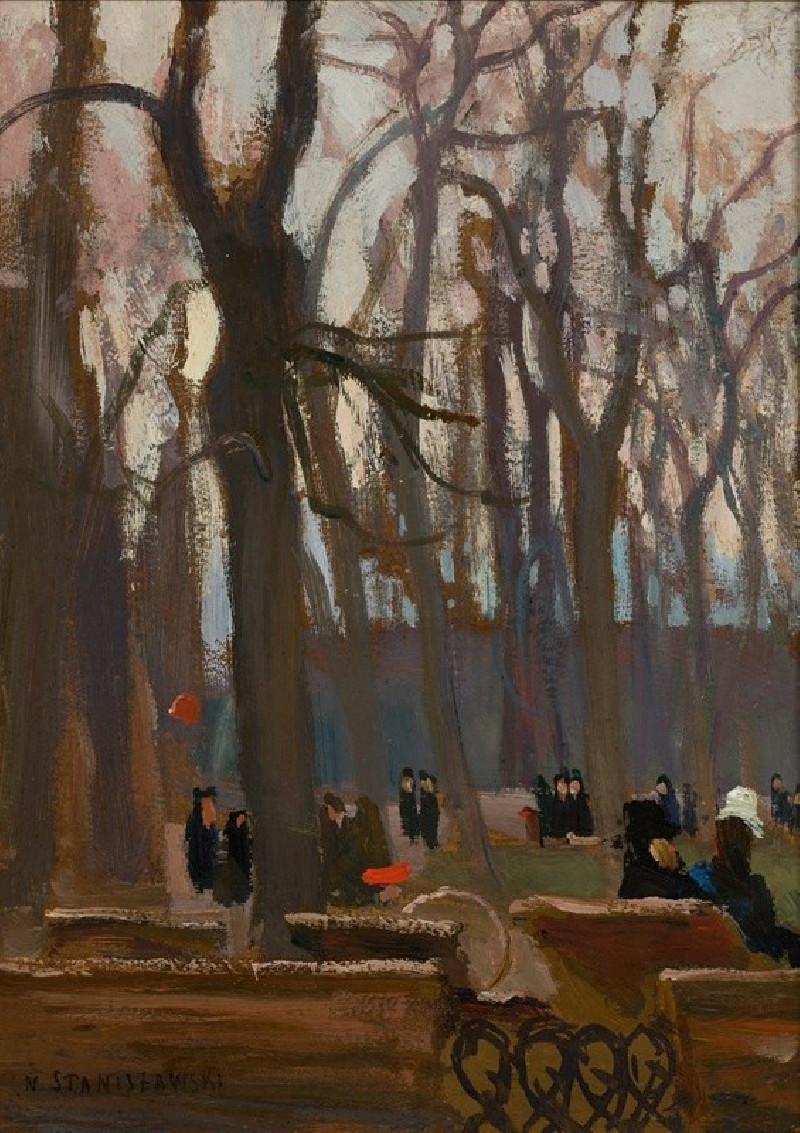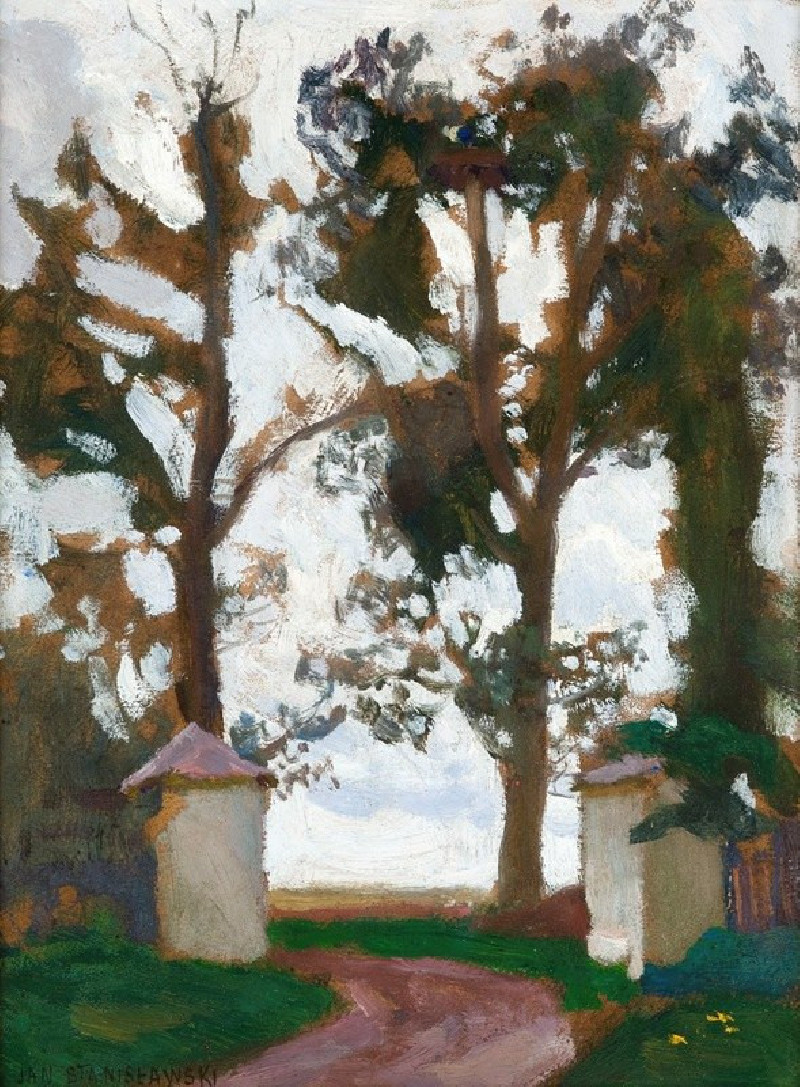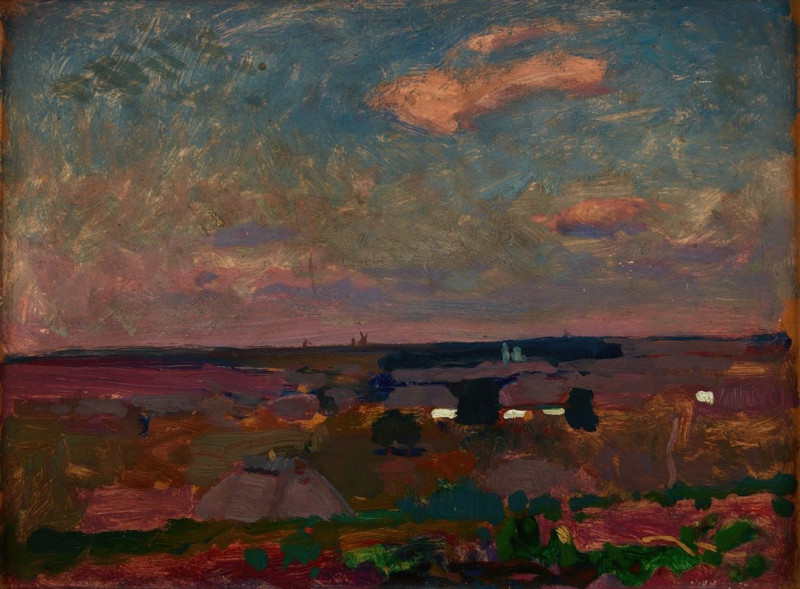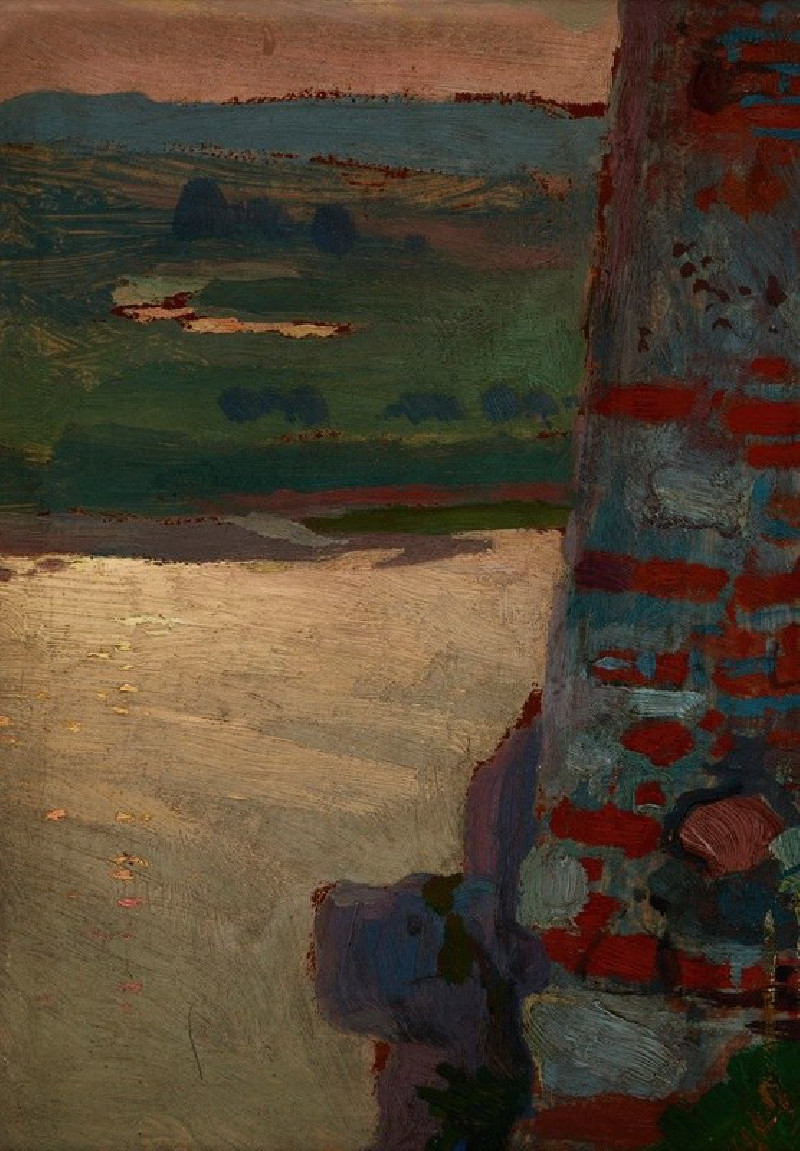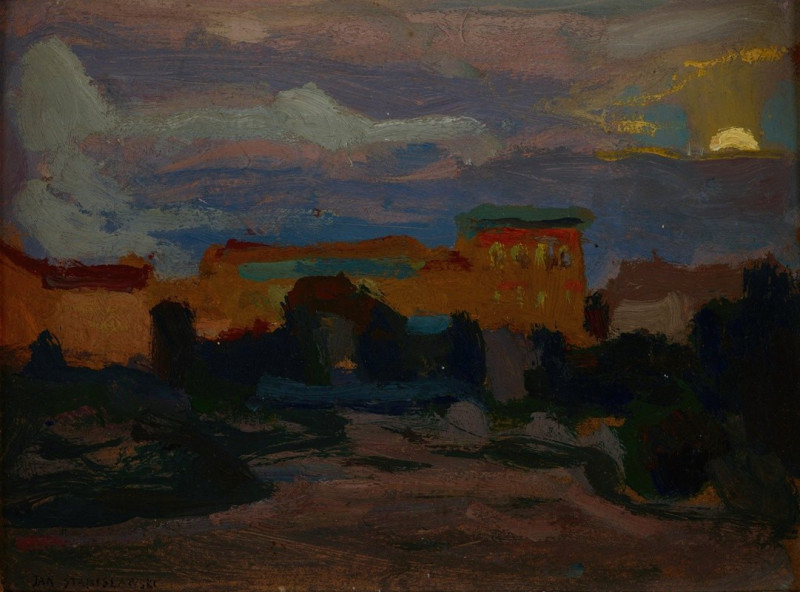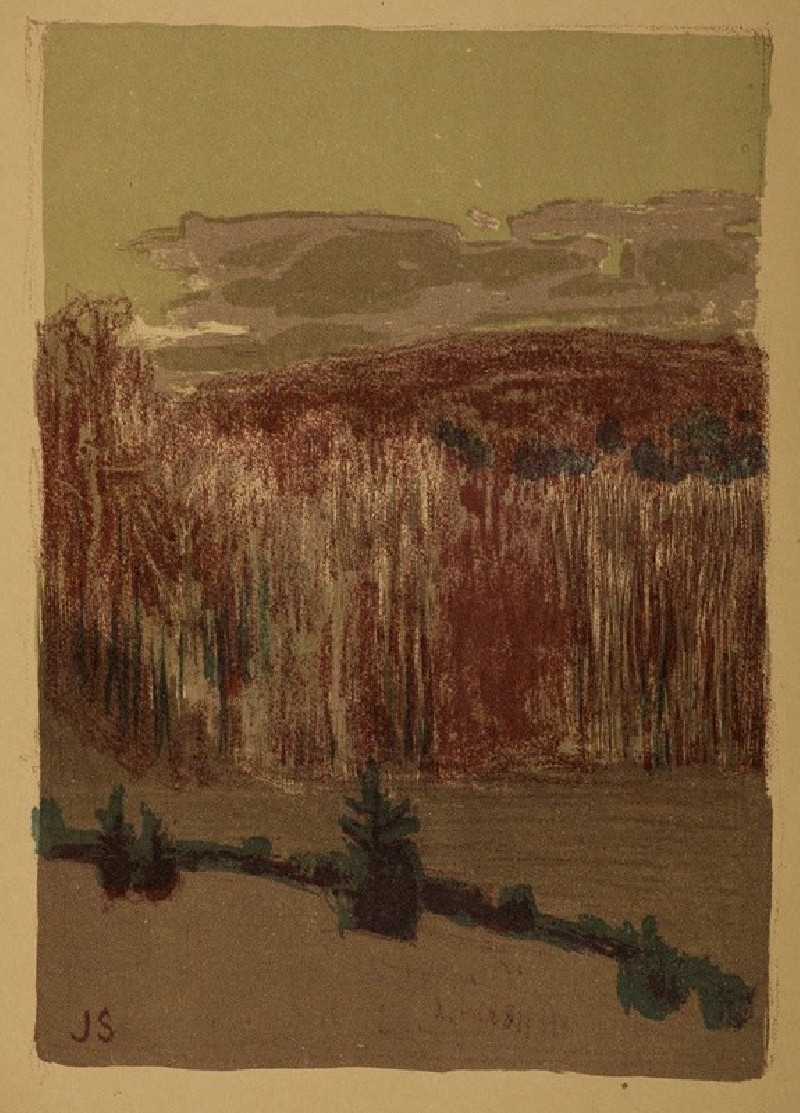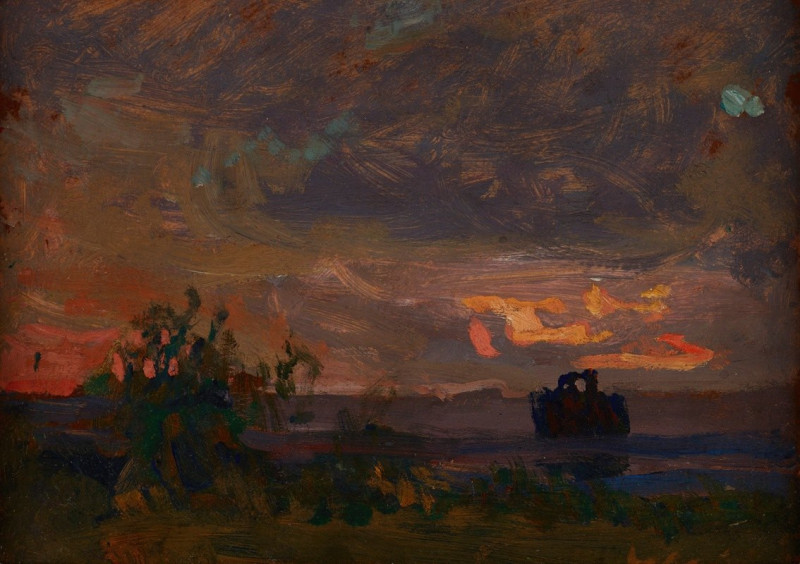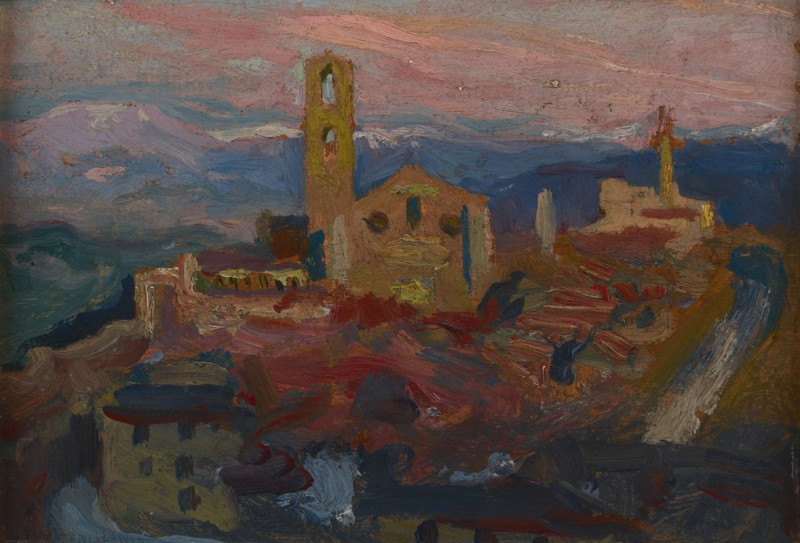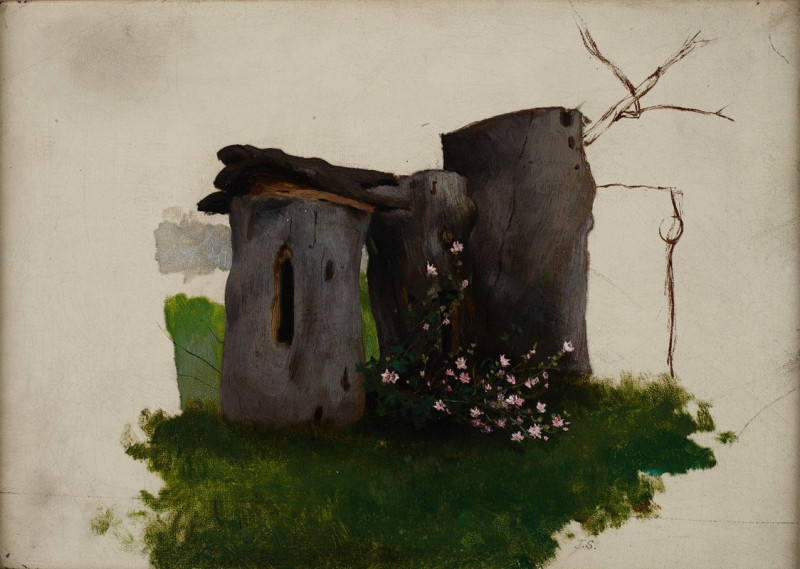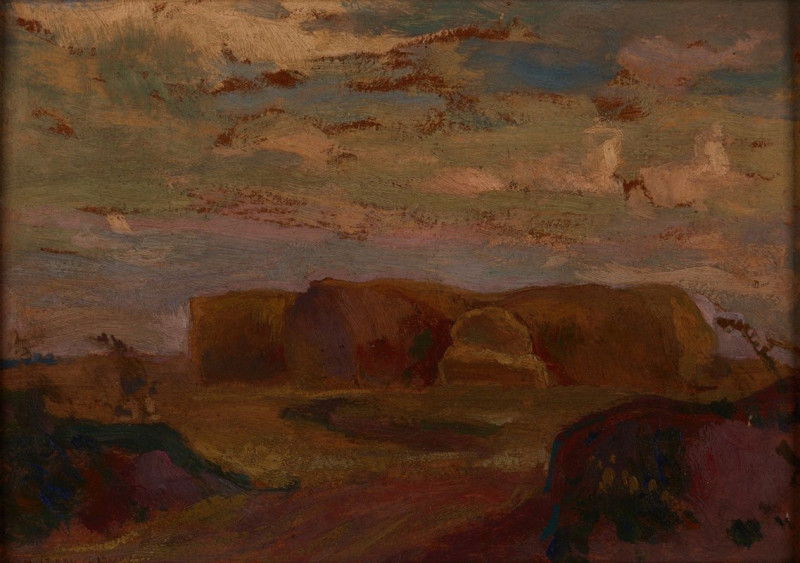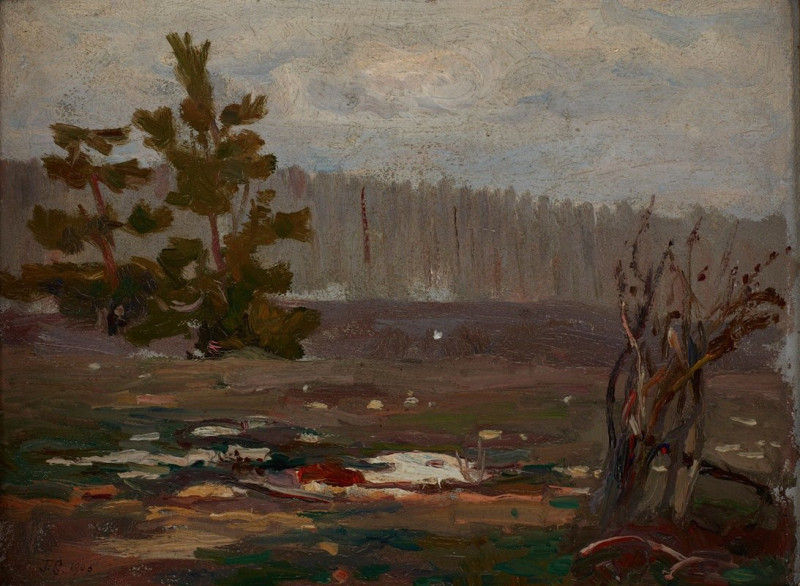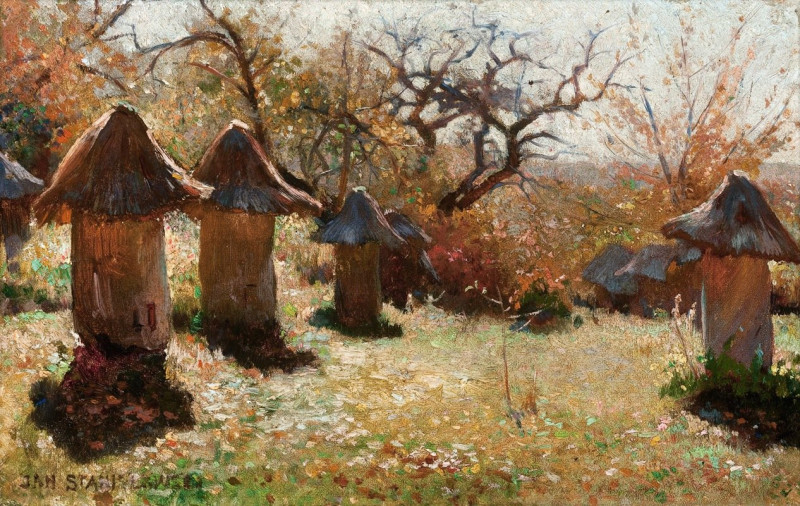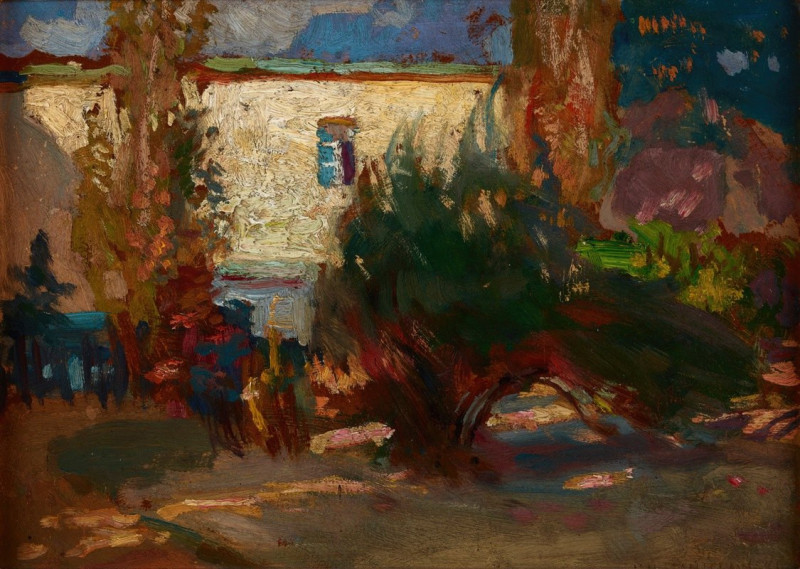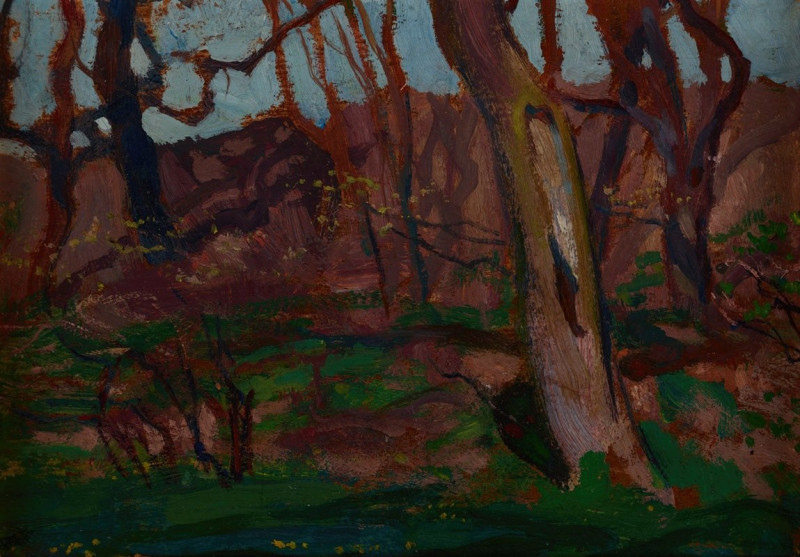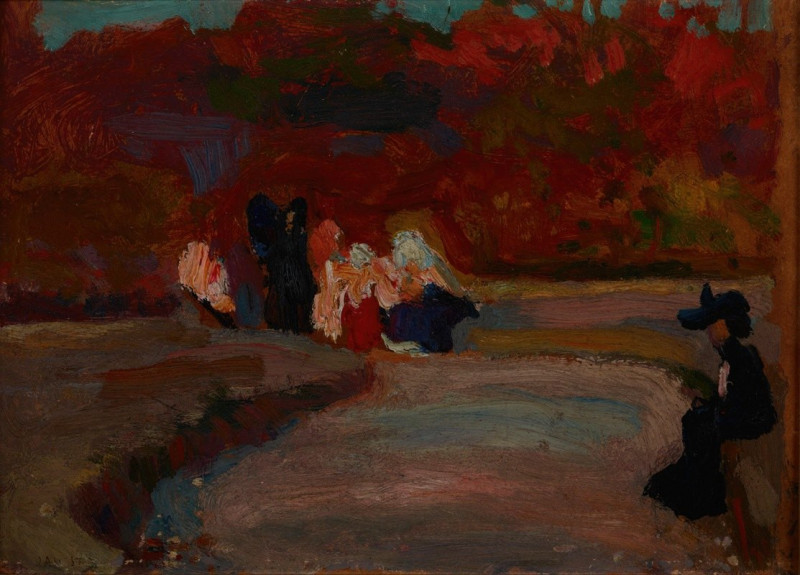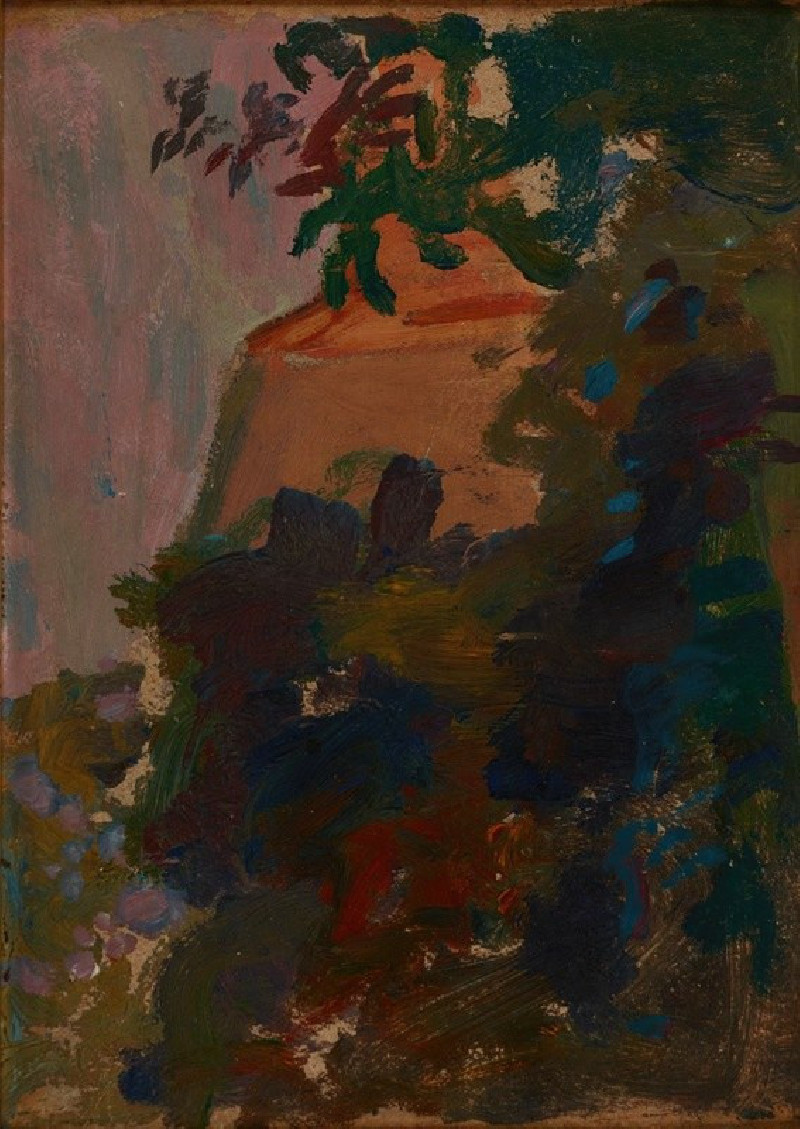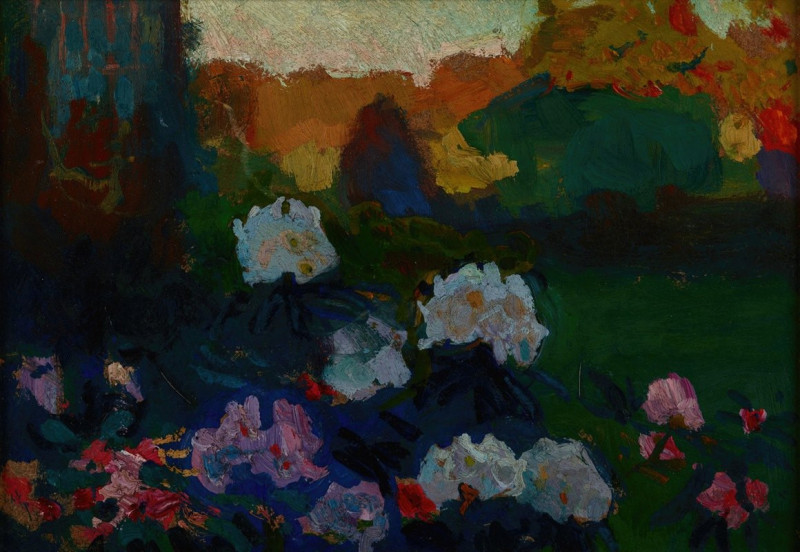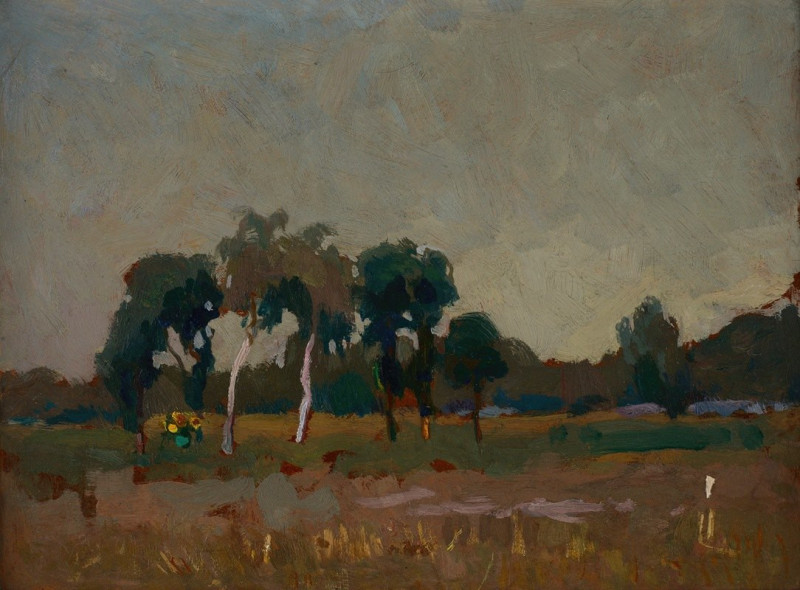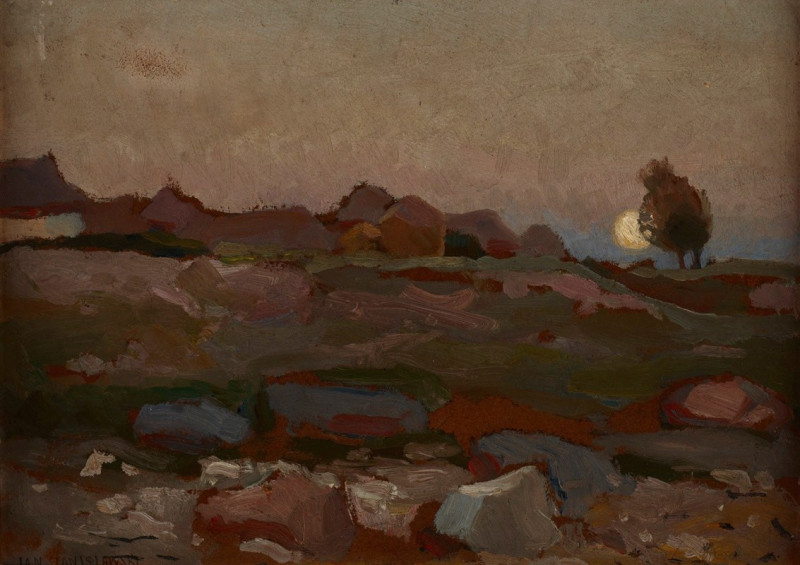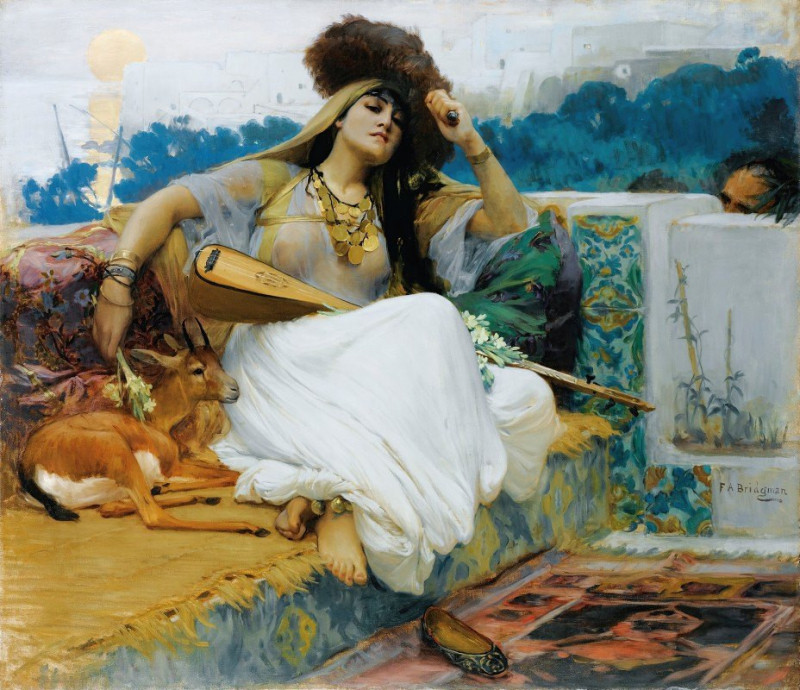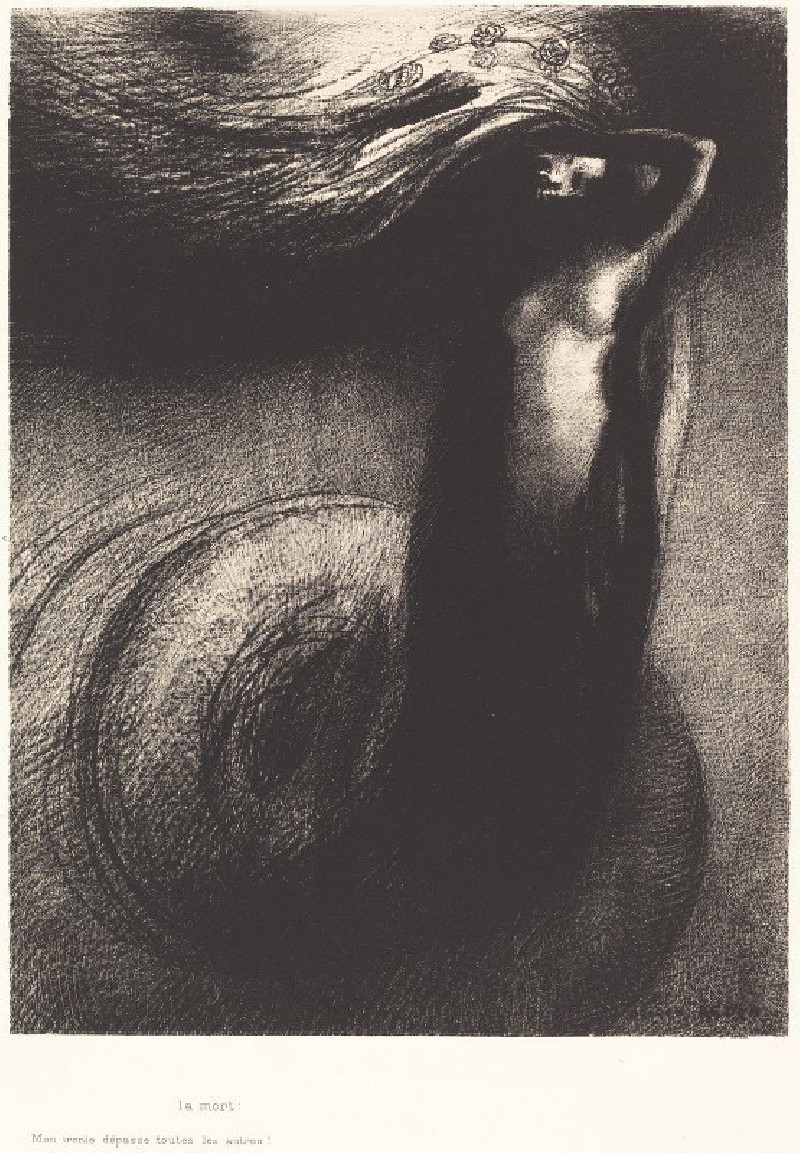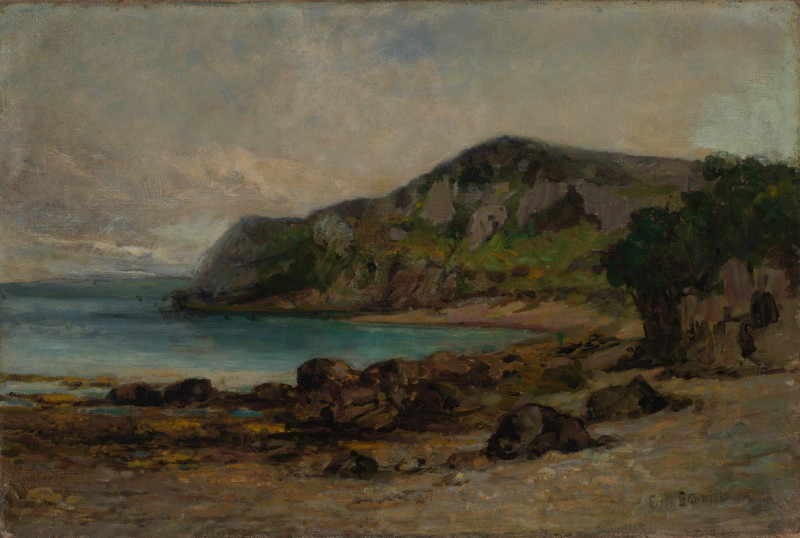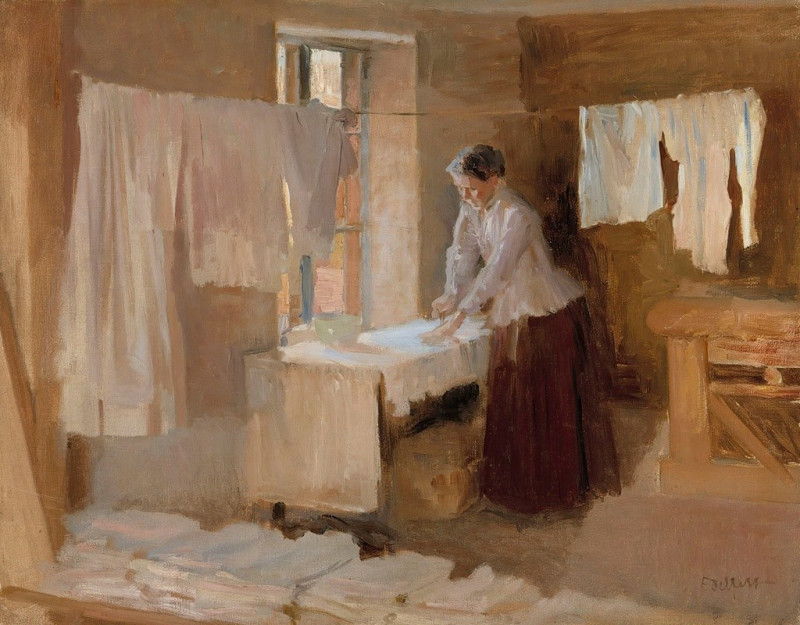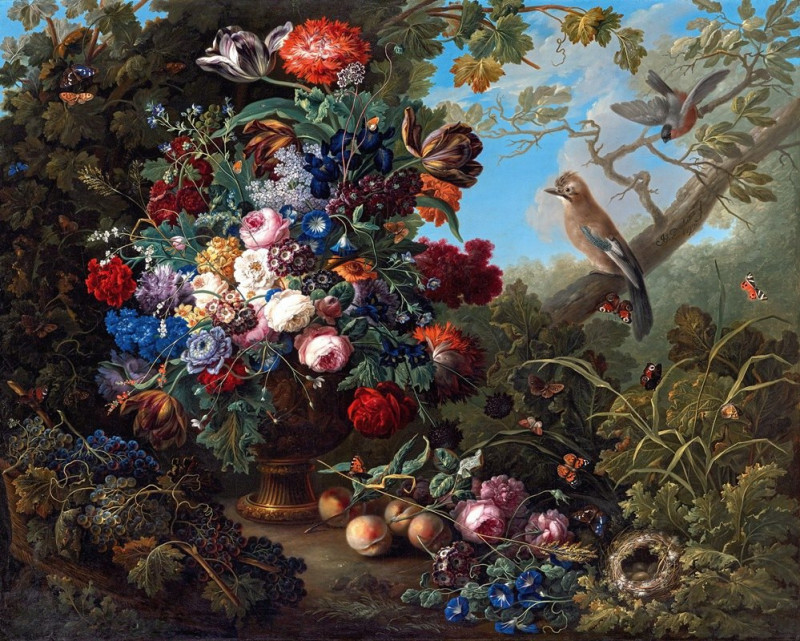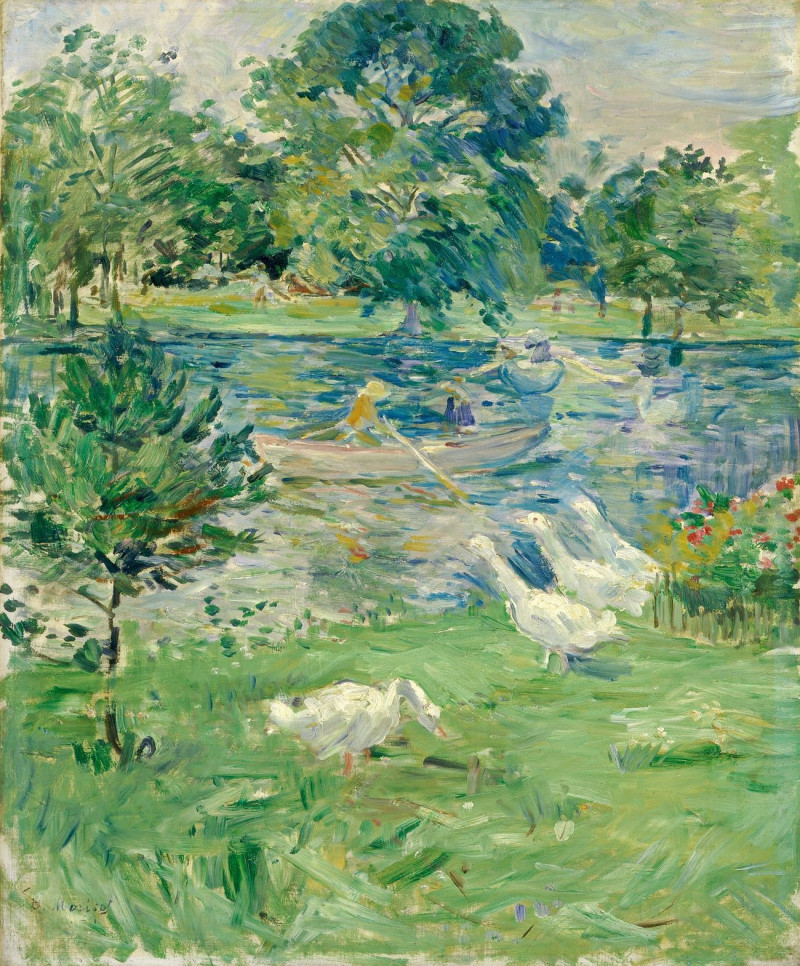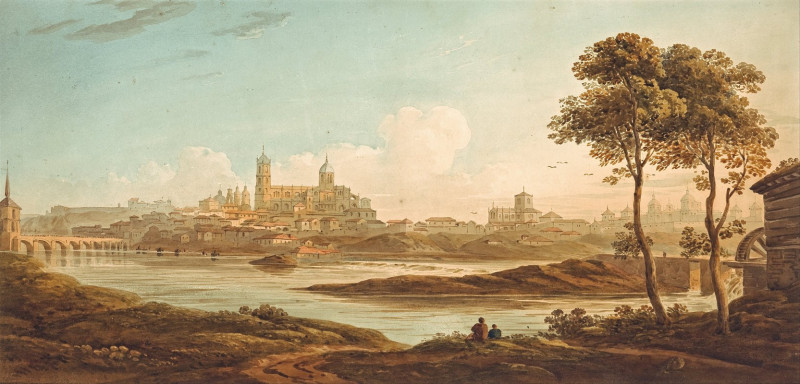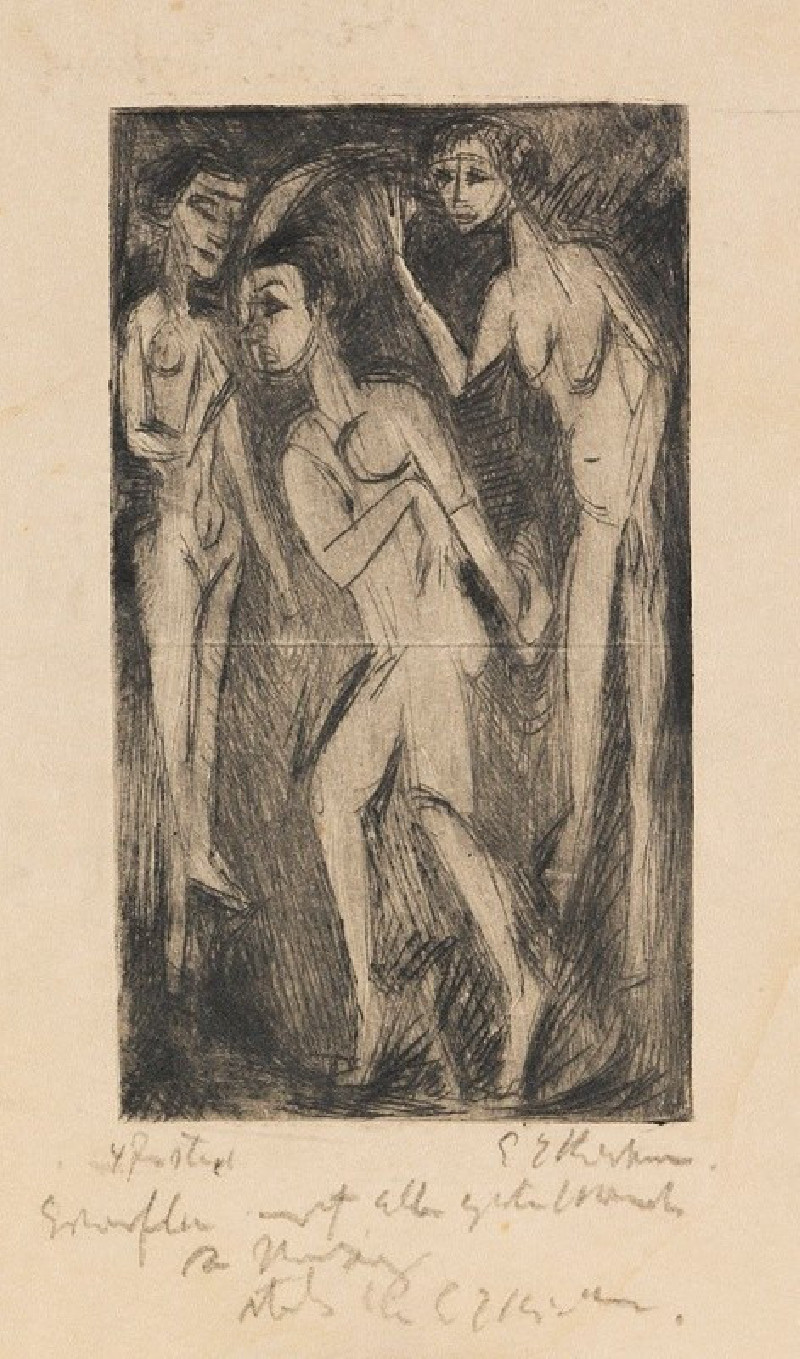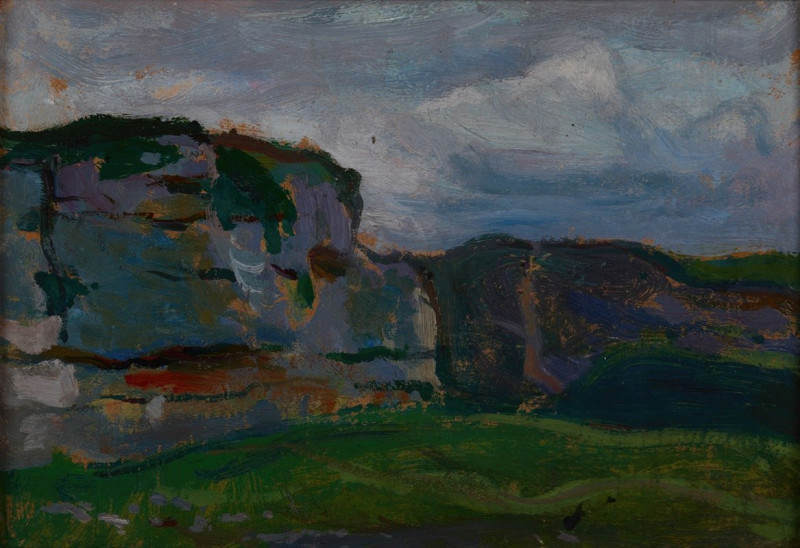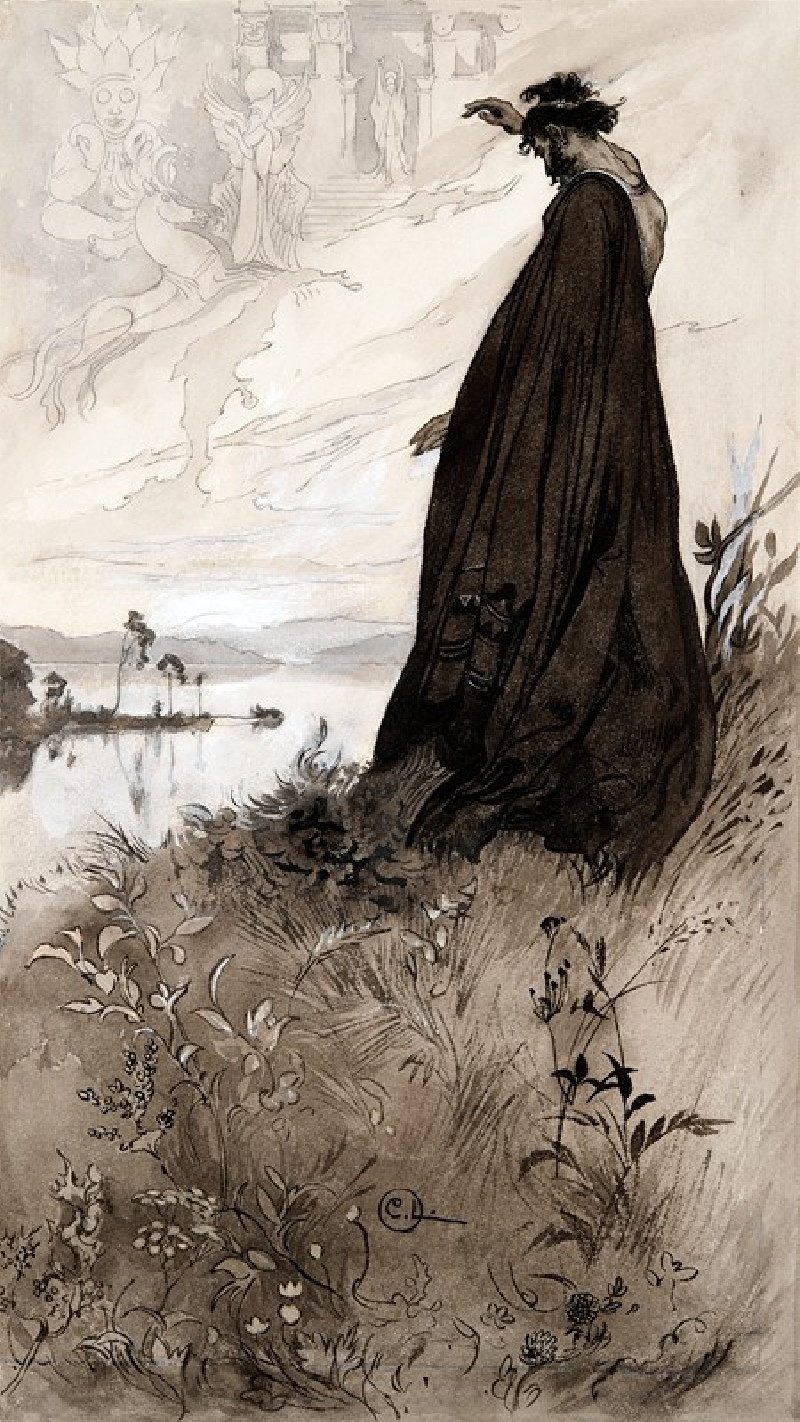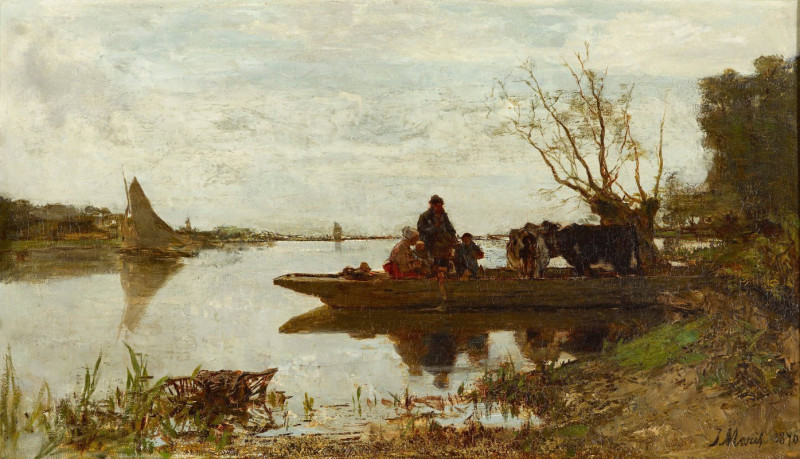Sun (1905)
Technique: Giclée quality print
Recommended by our customers
More about this artwork
Jan Stanisławski's captivating landscape painting "Sun" from 1905 exemplifies his mastery in rendering the natural play of light within a serene outdoors setting. The painting depicts a tranquil late afternoon where the sun, rendered with radiant and thick impasto, dominates the sky and infuses the scene with a warm, golden glow.The landscape beneath the brilliant sun reveals a minimalist yet expressive composition. Small patches of a rich blue suggest bodies of water, contrasting strikingly against the expansive green and yellow fields that mark a rural terrain. A solitary windmill, painted in vibrant reds and set in the distance, emerges as a focal point, adding a human element to the otherwise untouched natural vista.The sky, a canvas of soft pastels with strokes of pink and light blue, adds a dreamy and somewhat melancholic aura to the scene, suggesting the fleeting nature of daylight. The rough, textured brushstrokes throughout the composition imbue the painting with a dynamic sense of movement, almost as if the wind itself could be felt blowing through the scene.

